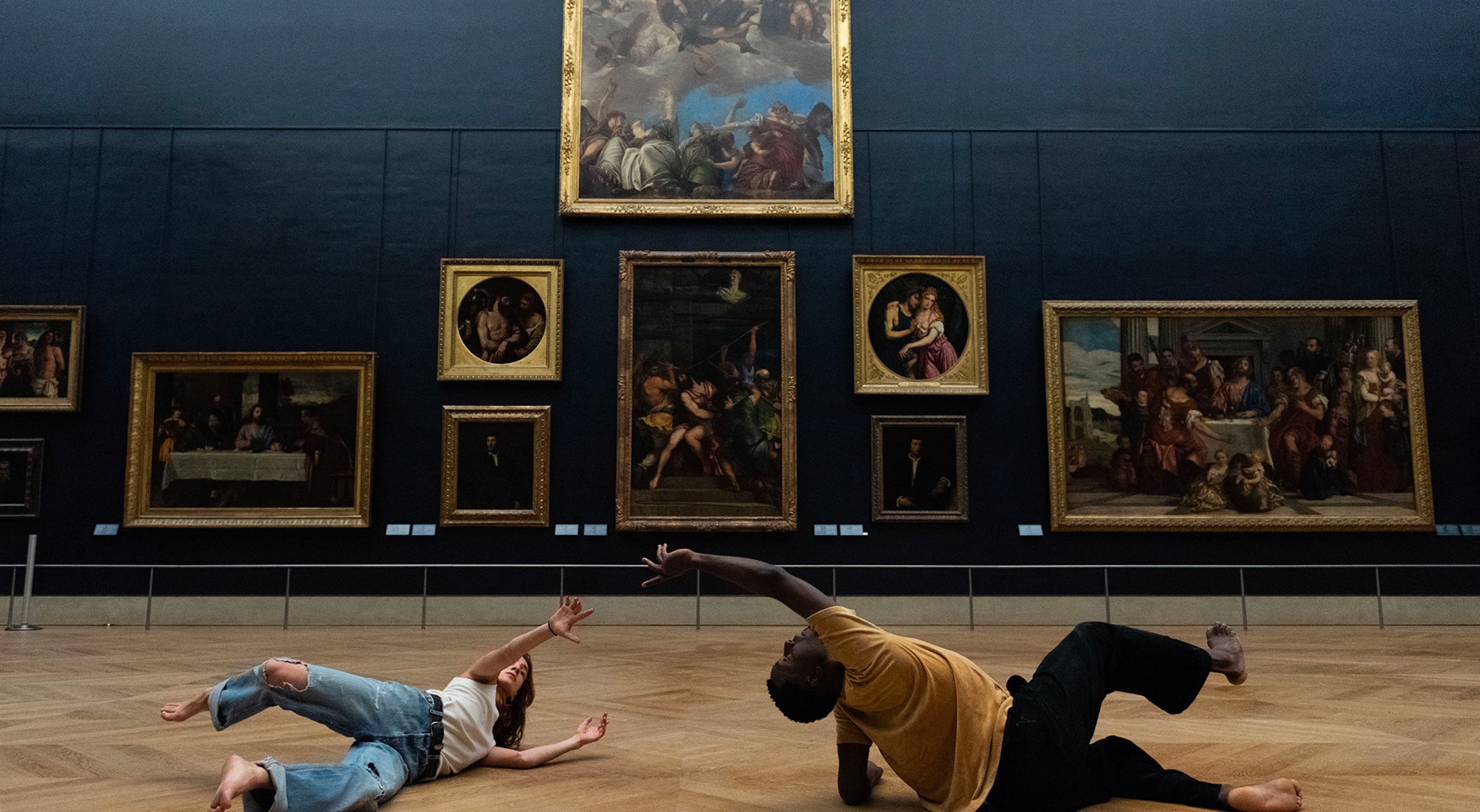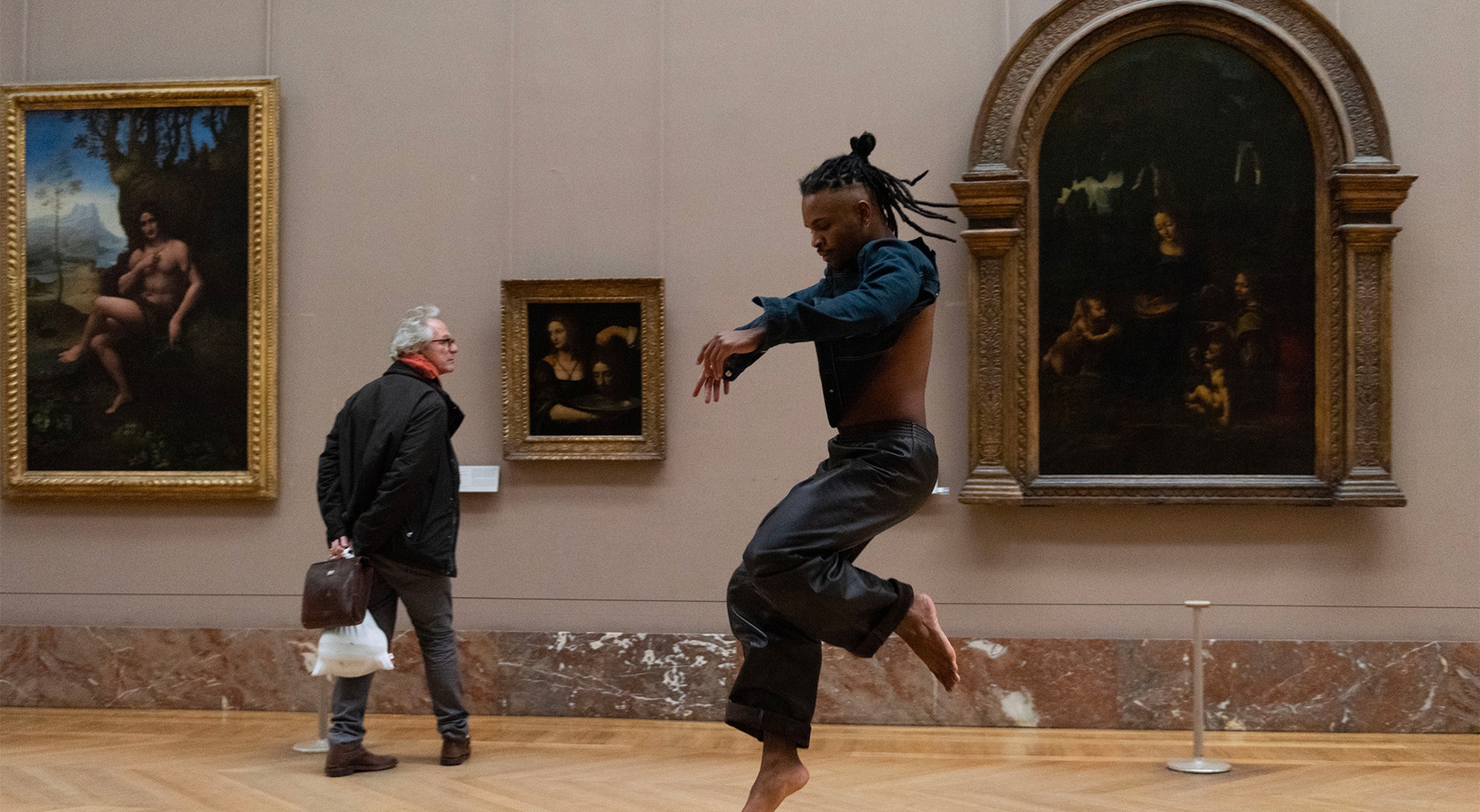Anne Teresa De Keersmaeker Némo Flouret Rosas
Forêt
Design and choreography, Anne Teresa De Keersmaeker, Némo Flouret
Performed by Boštjan Antončič, Lav Crnčević, José Paulo dos Santos, Synne Elve Enoksen, Rafa Galdino, Tessa Hall, Mariana Miranda, Margarida Ramalhete, Cintia Sebők, Jacob Storer, Solène Wachter
Soundtrack, Alain Franco
Costume Design, An D'Huys
Artistic Assistant, Michaël Pomero, Thomas Bîrzan
Research, Lieze Eneman, Thomas Bîrzan
Assistant to the artistic director, Martine Lange
Artistic coordination and planning, Anne Van Aerschot
Technical direction, Freek Boey
Technicians, Vincent Debognie, Yarno Drofmans, Alex Fostier, Thibault Rottiers
Head of Costume Design, Alexandra Verschueren
Dressing, Ella De Vos, Chiara Mazzarolo
Produced by Rosas
Co-produced by Musée du Louvre (Paris); Festival d’Automne à Paris
With support from the Belgian Government’s Tax Shelter, in collaboration with Casa Kafka Pictures – Belfius
Co-directed by Musée du Louvre (Paris); Festival d’Automne à Paris
Many thanks to, Evi Cats, Leen Decin, Jolente De Keersmaeker, Lennert De Taeye, Rémy Ebras, Ann Veronica Janssens, Jean Lemersre, Christian Longchamp, Murielle Scherre, Björn Schmelzer, Margaux Roy, Frank Theunissen / Natuurmonumenten
With support from Dance Reflections by Van Cleef & Arpels
Rosas is supported by the Communauté Flamande, the Commission communautaire flamande (VGC) and the Fondation BNP Paribas.
Forêt is a museum-based project destined for the first floor of the Musée du Louvre’s Denon wing. Here, Anne Teresa De Keersmaeker assembles a new generation of artists and dancers, but also reunites with one of her regular collaborators, the choreographer Némo Flouret.
Forêt is part a drive initiated a few years ago by Anne Teresa De Keersmaeker to bring dance out of theatre and confront it with different spaces, principally museums. This new project sees her once again working alongside Némo Flouret, with whom she collaborated in 2020 at the Fondation Beyeler. Together, they examine the emergence of a visual culture and the modern way of seeing or looking by means of collections of paintings ranging from the XIVth to the XIXth centuries. By setting up links between the works and the architecture of the building, via strategies of scale, contrast, and framing, Forêt seeks to outline new peripheries by setting up interplay between the notions of threshold and limit. Expansion and contraction work the bodies in different ways, just as much as time and space do. But in the context of the Louvre, how should we set about doing this? What stance could or should an artist take up in the face of this great mass of information, and the accumulation of legends and testimonies in circulation there? What resonances will their bodies and voices set in motion, propelled, as they are, headlong into a space of such unique density? And what will come of it… solitude, perhaps?
See also


